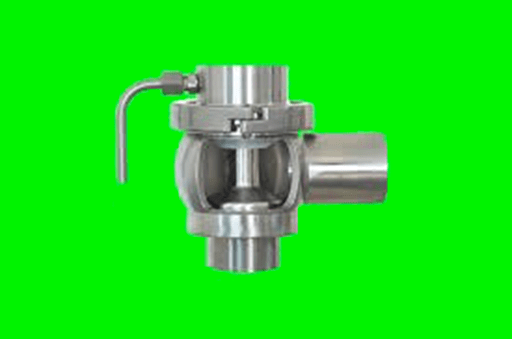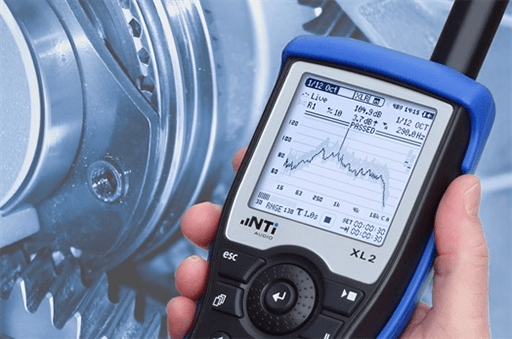
Figure 1: Overflow valve.
Overflow valve is one of the classic industrial products. Today, let's take a look at its common faults and how to solve them.
1. Noise and Vibration
1.1 Noise from Holes
When the air is sucked into the oil for various reasons, or when the oil pressure is lower than the atmospheric pressure, part of the air dissolved in the oil will be separated out to form bubbles. These bubbles are large in the low-pressure area. When they flow with the oil to the high-pressure area, they are compressed, the volume suddenly becomes smaller or the bubbles disappear; On the contrary, if the volume is small in the high-pressure area, when it flows to the low-pressure area, the volume suddenly increases, and the bubble volume in the oil changes rapidly. The sudden change of bubble volume will produce noise. And because this process takes place in an instant, it will cause local hydraulic shock and vibration. The overflow valve port great changes in the oil flow rate and pressure, and it is prone to cavitation, resulting in noise and vibration.
1.2 Noise from Hydraulic Shock
When the overflow valve is unloaded, the pressure impact noise will occur due to the sudden drop of the pressure in the hydraulic circuit. The higher the working conditions of high pressure and large capacity, the greater the impact noise is. This is caused by the hydraulic shock from the short unloading time of the overflow valve. During unloading, the sharp change of oil flow rate causes the sudden change of pressure, resulting in the impact of pressure wave. The pressure wave is a small shock wave, and the noise generated by itself is very small. However, when the oil is transmitted to the system, if it resonates with any mechanical part, it may increase the vibration and noise. Therefore, when hydraulic impact noise occurs, it is usually accompanied by system vibration.

Figure 2: Measuring the noise and vibration of the valve.
2. Radial Clamping of Valve Element
Due to the influence of machining accuracy, the main valve core is clamped radially, so that the main valve cannot be opened or closed without pressure relief. In addition, it is clamped radially due to pollution.
3. Pressure Regulation Failure
Pressure regulating failure sometimes occurs in the use of overflow valve. There are two cases of the failure of pilot relief valve: one is that the pressure cannot be established by regulating the pressure regulating handwheel, or the pressure cannot reach the rated value; The other one is adjusting the pressure of the hand wheel without decreasing or even increasing. In addition to radial clamping of valve element due to various reasons, there are also the following reasons for pressure regulation failure:
1.The first reason is that the damper of the main valve body is blocked, and the oil pressure cannot be transmitted to the upper chamber of the main valve and the front chamber of the overflow valve, so the valve will lose its regulating effect on the pressure of the main valve. Because there is no oil pressure in the upper chamber of the main valve and the spring force is very small, the main valve becomes a direct acting overflow valve with very small spring force. When the pressure in the oil inlet chamber is very low, the main valve opens the overflow, and the system cannot establish pressure. The reason why the pressure can not reach the rated value is that the pressure regulating spring is deformed or incorrectly selected, the compression stroke of the pressure regulating spring is not enough, the internal leakage of the valve is too large, or the cone valve of the overflow valve is excessively worn.
2.The second reason is that the damper is blocked, and the oil pressure cannot be transmitted to the cone valve, so the pilot valve loses the regulating effect of the main valve pressure. After the damper (small hole) is blocked, the cone valve will not open the overflow oil under any pressure, there is no oil flow in the valve, and the pressure in the upper and lower chambers of the main valve is always the same. Since the annular pressure bearing area at the upper end of the main valve core is larger than the annular pressure bearing area at the lower end, the main valve is always closed without overflow, and the pressure of the main valve increases with the increase of load. When the actuator stops working, the system pressure will rise indefinitely. In addition to these reasons, it is necessary to check whether the external control port is blocked and whether the cone valve is well installed.

Figure 3: Avoid pressure regulation failure of the overflow valve.
4. Other Faults
1.During the assembly or use of overflow valve, due to the damage of O-ring and combined seal ring, or the looseness of mounting screws and pipe joints, undue leakage may be caused.
2.If the cone valve or main valve core is worn too much, or the sealing surface is in poor contact, it will also cause excessive internal leakage and even affect the normal operation.
Related Info
What is A Overflow ValveWhat is Hydraulic Motor
Troubleshooting of Hydraulic Motor
Selection and Use of Hydraulic Motor


